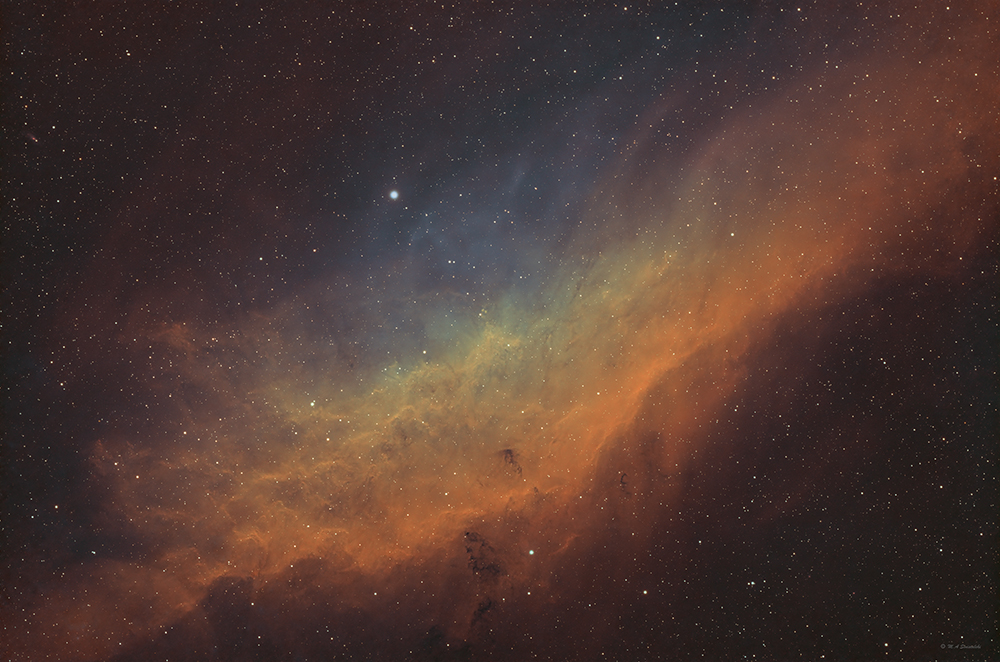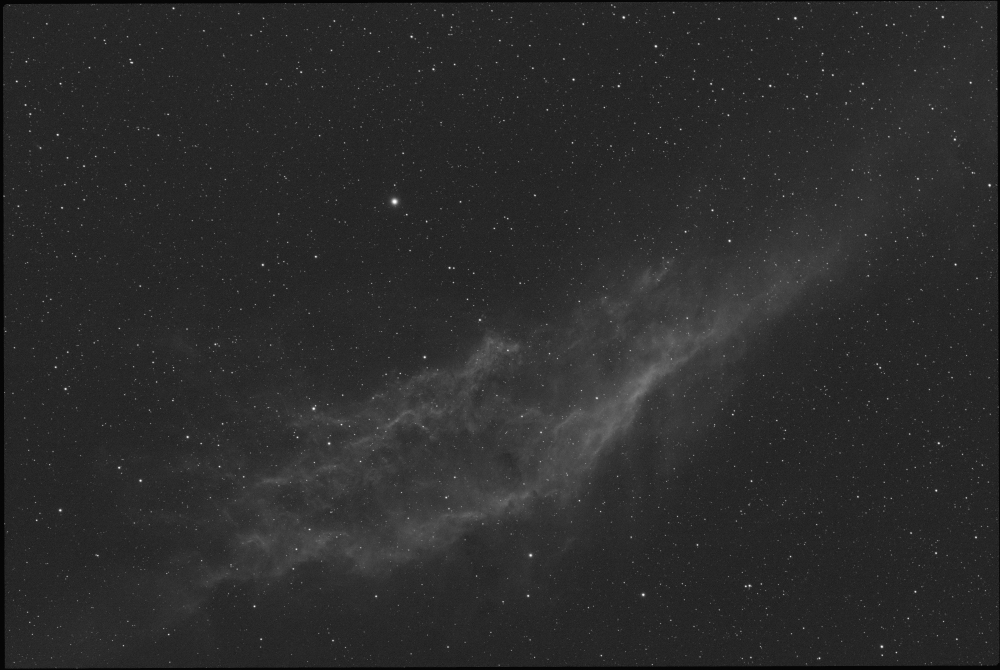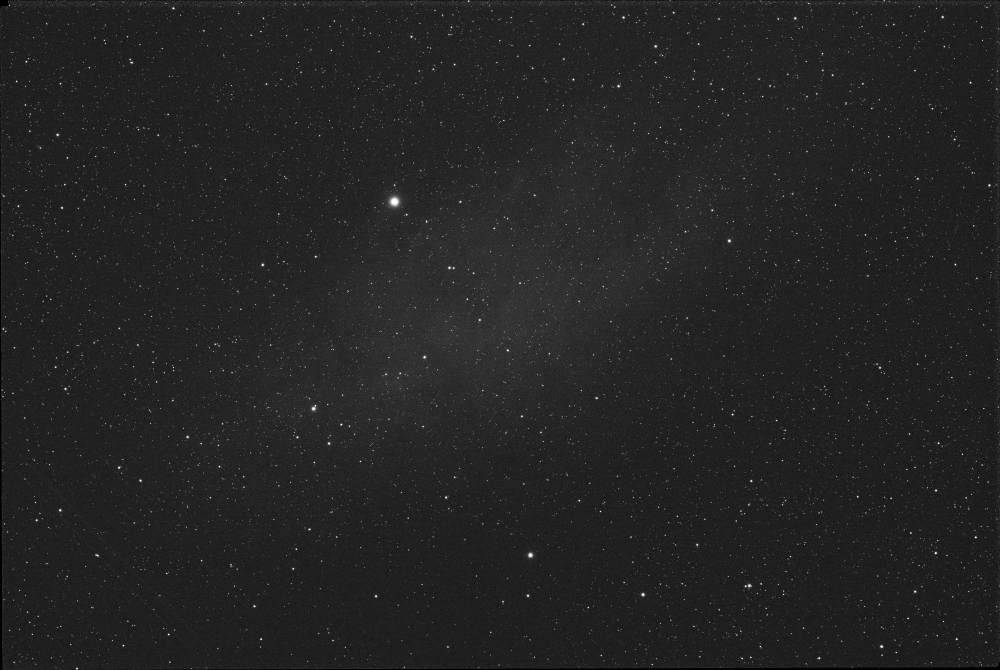© 2024 Michael A. Siniscalchi
SH2-220
Emission Nebula in Perseus
RA 04h 03m 20s Dec: +36 25' 12" Distance ~1000 ly
Wikipedia-
The California Nebula (NGC 1499/Sh2-220) is an emission nebula located in the constellation Perseus. Its name comes from its resemblance to the outline of the US State of California in long exposure photographs. It is almost 2.5° long on the sky and, because of its very low surface brightness, it is extremely difficult to observe visually. It can be observed with a Ha filter (isolates the Ha line at 656 nm) or Hß filter (isolates the Hß line at 486 nm) in a rich-field telescope under dark skies. It lies at a distance of about 1,000 light years from Earth. Its fluorescence is due to excitation of the Hß line in the nebula by the nearby prodigiously energetic O7 star, Xi Persei (also known as Menkib). The California Nebula was discovered by E. E. Barnard in 1884.
This is a first light image using the new Player One Poseidon-M Pro camera (Sony IMX571) w/ Antila SHO Pro narrow band filters and the Askar FRA400 astrograph.
Click on image for full size
Click on image for medium size
Initial stretch of 1 1/2 hours of Hydrogen Alpha (Ha) taken with Antlia 4.5nm filter
Initial stretch of 1 1/2 hours of Sulfur (SII) taken with Antlia 3nm filter
Initial stretch of 2.9 hours of Oxygen (OIII) taken with Antlia 3nm filter
The OIII has low brightness but the 3nm filter enhances the contrast



